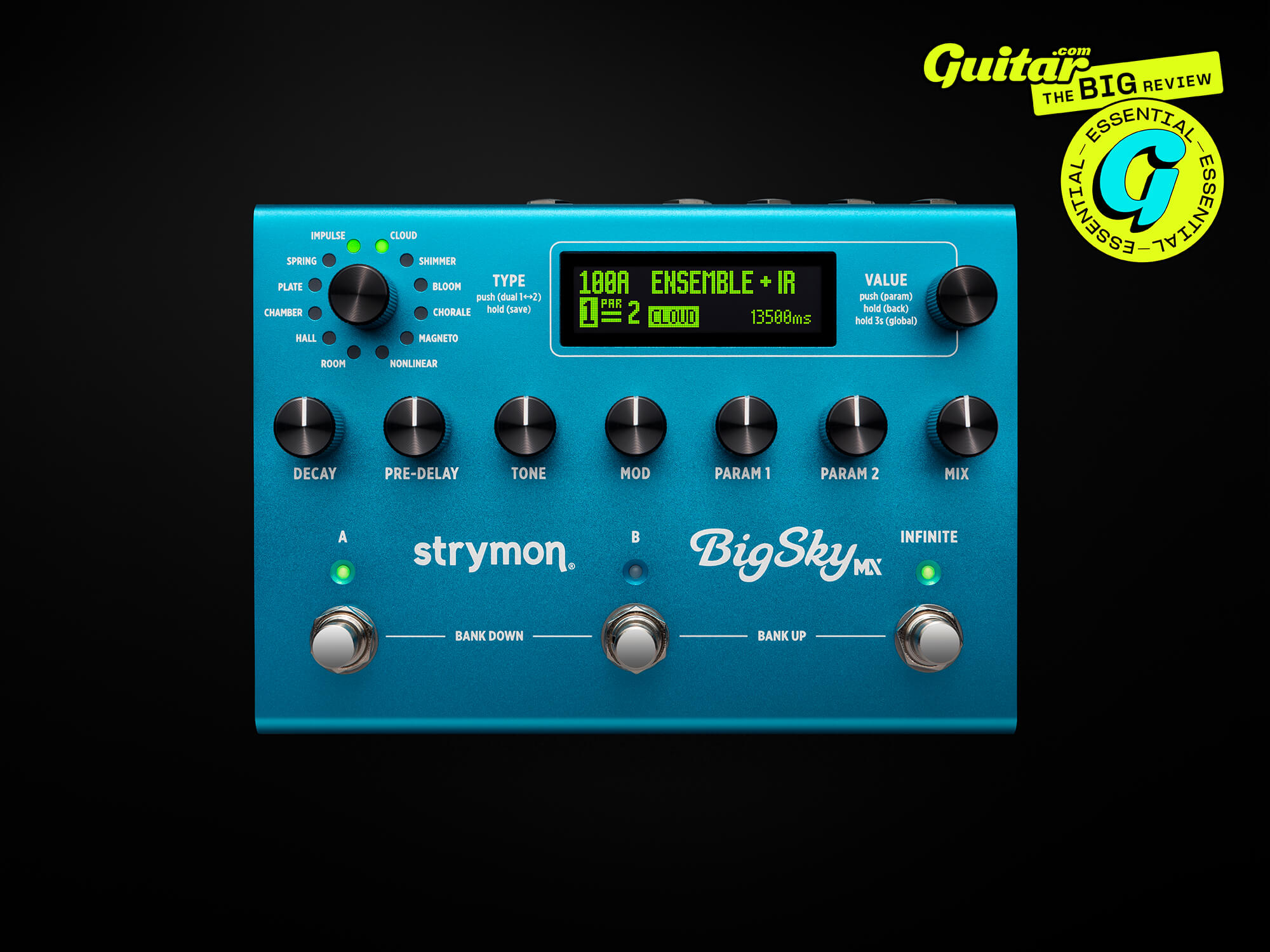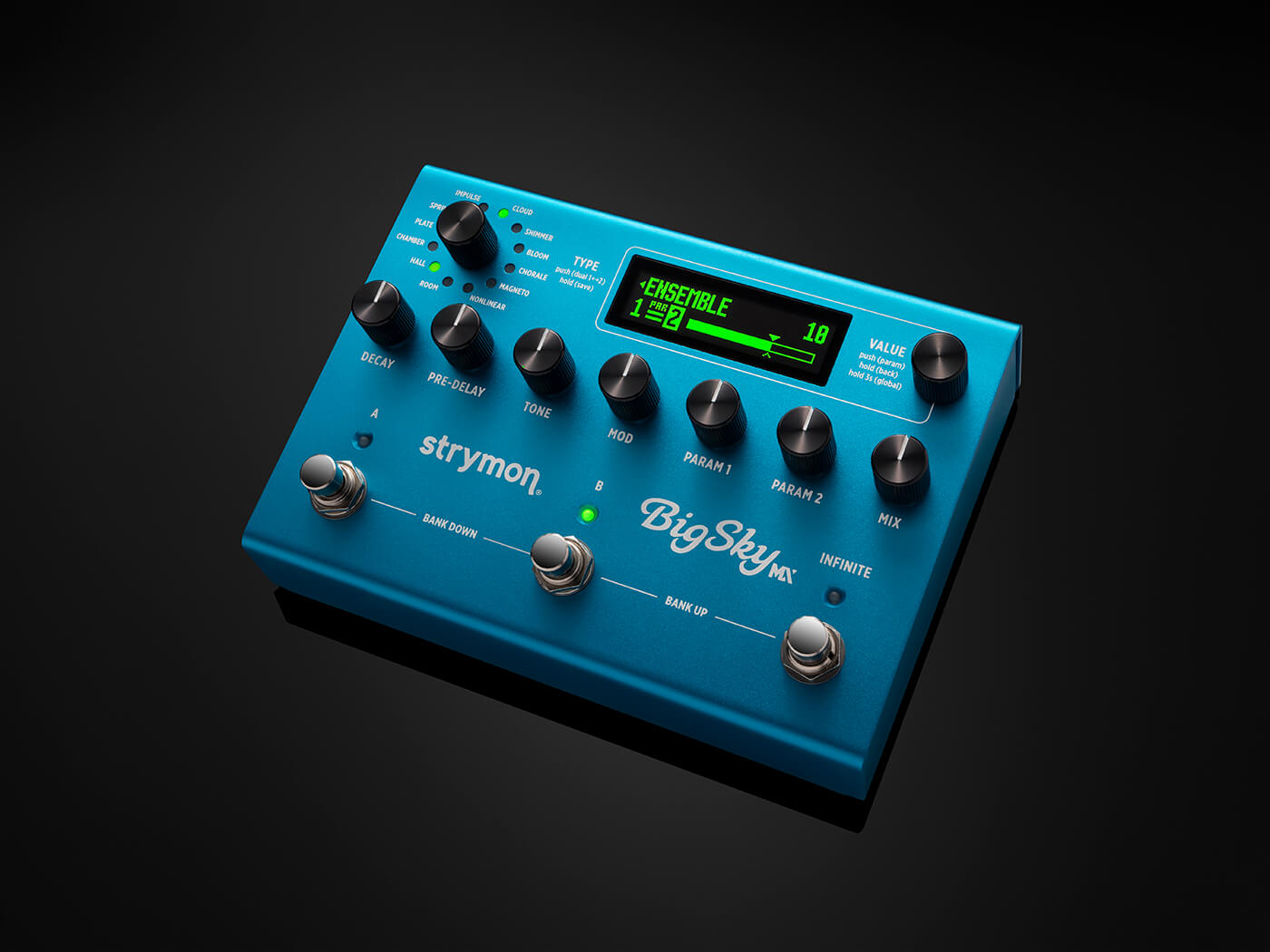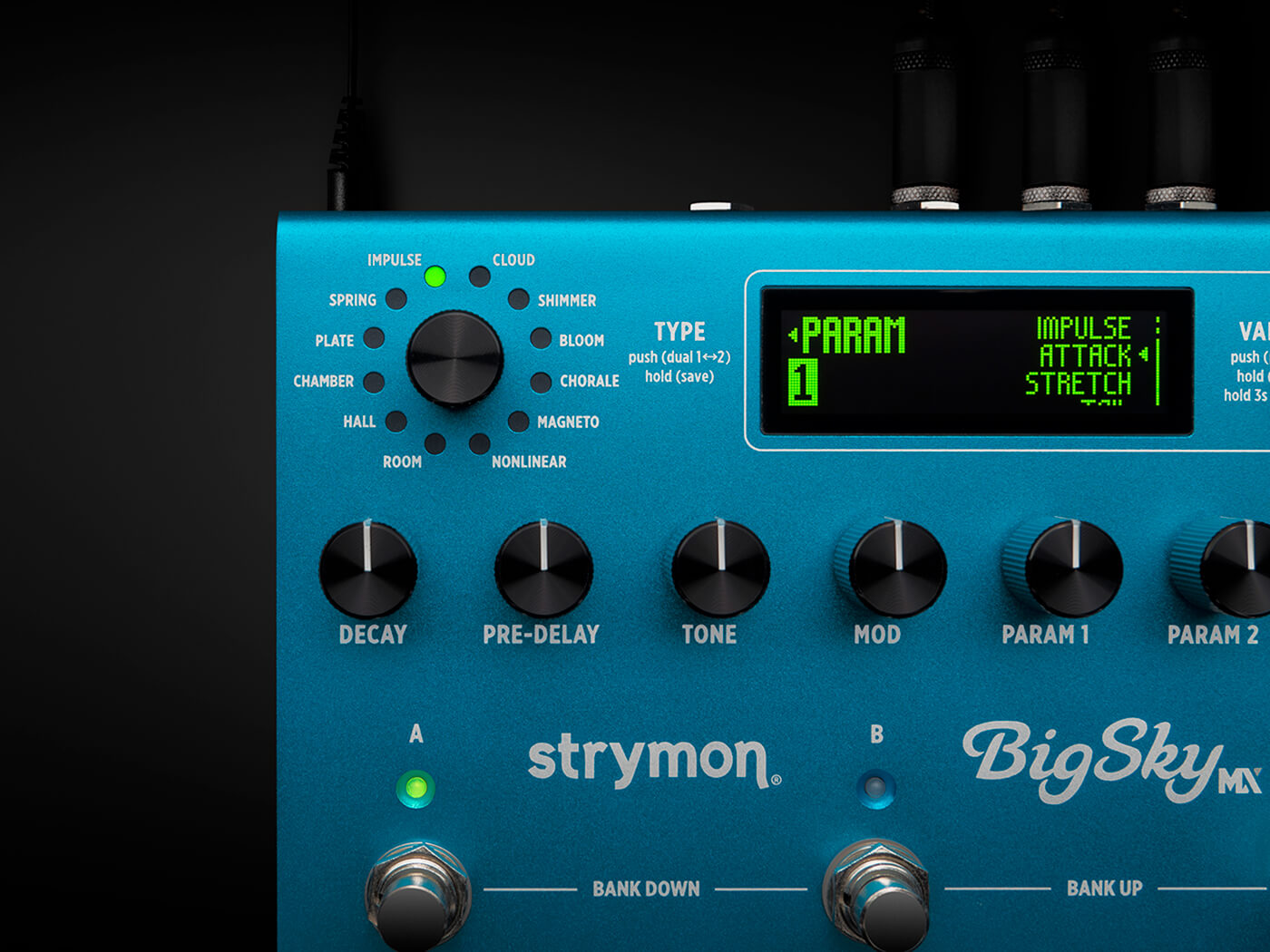Strymon BigSky MX review – what’s changed? Should you upgrade? And is it still the world’s best reverb pedal?
Strymon’s big box reverb is one of the most important and beloved pedals of the last decade, but will this ‘MX’ version build on the original’s brilliance enough to justify your upgrade?

Strymon BigSky MX. Image: Press
Review Overview
Our rating
9
Our verdict
$679, strymon.net
It’s remarkable what Strymon has done in a remarkably short period of time. In a little over a decade the US high-end effects brand has gone from, ‘Didn’t they used to be Damage Control?’ to being almost ubiquitous on professional pedalboards and broadly regarded as maker of some of the best effects pedals in the world.
- READ MORE: PRS SE CE 24 Standard Satin review – is this the best value electric guitar in the world right now?
The original BigSky (which followed hot on the heels of Strymon’s first major hit, the TimeLine delay) is a huge reason for this rapid rise. The BigSky changed the entire game regarding high-end effects, and helped the wider guitar world finally accept that high-end DSP could be just as exciting and sonically exceptional as analogue.
It’s not an exaggeration to say that without Strymon and those first two big box high-end pedals, the modern effects landscape would be dramatically different. It’s also testament to how right Strymon got it with the original BigSky that despite it being a decade old now, it remains a benchmark high-end reverb pedals, with most other big box pedals still playing catch-up a decade on – in the rapidly evolving and changing world of digital effects, that’s quite a thing!
But a decade on, the market has evolved – in no small part due to Strymon – and now the BigSky having to compete against similarly ambitious pedals from Meris, Boss, Empress, Walrus, Hologram and scores of others. Time then, for an update – meet the BigSky MX.

How is the Strymon BigSky MX different from the regular BigSky?
Given the iPhone-style name change and the fact that recent Strymon updates to existing pedals (think the ‘Next Generation’ updates to its smaller pedals in 2022) have leant towards the ‘useful but iterative’ end of things rather than anything more world-shaking, you’d be forgiven for thinking that this might be more of the same.
However, Strymon is keen to point out that in fact, the Big Sky MX has been completely redesigned from the ground up, and sports a host of updates and enhancements compared to its predecessor – though quite how meaningful this redesign is we’ll have to see…
As with the recent Blue Sky update, the Big Sky MX features a new low-noise JFET preamp input, which delivers the signal to a brand new and uprated DSP chip – in this case it’s a tri-core 800mHz 32-bit floating point processing ARM unit, which is more than double the horsepower of the old Big Sky’s SHARC brain. The extra grunt under the hood enables a plethora of new features on tap.
Most notable from a feature-set perspective is the ability to run two reverb algorithms at once with multiple routing options including split, parallel, or series. By itself this may not seem like much, but for a person who likes to stack reverb sounds or wants to run a stereo rig, it’s a huge deal – the days of needing more than one reverb pedal on your board might very well be over.

Speaking of algorithms, let’s talk about those! The BigSky MX gets everything you know and love from the original version plus a brand new reverb algorithm – Chamber. We’ll get to those later.
Arguably the biggest and probably the most requested feature to arrive with the BigSky MX is IR implementation, and it’s not some tacked on extra either. Impulse mode comes loaded with 22 unique impulse responses, and thanks to the MX’s ability to run two sounds simultaneously, you can apply these IRs to any of the existing algorithms. What’s more, the companion Nixie 2 app means you can also add your own or 3rd party reverb IRs, which both future-proofs the pedal and adds a huge amount of sonic customisation.
And the existing sounds have also had an overhaul – Bloom mode has an all-new harmonics engine, there’s an all-new Chorale choir algorithm that adds tenor and baritone voicings, Magneto adds ping-pong stereo, Shimmer is optimised for cleaner pitch-shifting, the Swell functionality can now be paired with any other algorithm, and you can freely shift your reverb sounds across the stereo field.
As if that wasn’t enough, you also get a clever new infinite/freeze footswitch, panning options, a larger OLED display, USB-C full MIDI control and of course, the updated Nixie 2 app mentioned above. Phew!

Is the Strymon BigSky MX easy to use?
One of the main reasons that a significant minority of guitar players prefer Strymon’s smaller format pedals to the big box guys like the BigSky and TimeLine is because they’re put off by the undeniable menu diving that was required to get the best out of these pedals.
The very good news for those people is that the BigSky MX does away with much of this in favour of a more stripped down and intuitive approach – helped in no small part by the OLED display being crisp and easy to read in most environments.
The new single-line knob layout certainly alters the aesthetic of the BigSky – for years we’ve become so accustomed to the ‘two rows of knobs and three switches’ configuration for Strymon’s big box pedals, but it’s instantly more visually intuitive, especially with the screen being such a bigger part of the set-up.
For BigSky veterans, the good news is that even though the layout has changed, most of the knobs perform a similar or identical function to their predecessors, so it shouldn’t take you long to refamiliarise yourself with how it all works.
For newbies, the trick to easily traversing the BigSky MX is mastering the subtle art of pressing down and releasing – everything from saving presets to tweaking parameters is a simple matter of pres and release. Naming presets is also a great deal easier with the OLED display – something that was occasionally painful on the original BigSky.

What does the BigSky MX sound like?
The elevator pitch for the original BigSky was effectively ‘every reverb sound you could ever need in one pedal’, and the MX version probably ups that ante to ‘every reverb sound you could ever imagine in one pedal’. In distinctly Strymon style, the most interesting part of the MX is the potential it offers to create new and interesting reverb sounds that you’ve never heard before.
With 22 unique impulse responses accompanied by the two new and 11 revamped algorithms, the potential to craft a sound that’s truly your own has never been more evident. But more than that, we have the new processor adding greater depth to existing algorithms.
For example, the Ensemble feature makes its way over from last year’s impressive Cloudburst pedal, and again provides cavernous string-like subtleties of John Williams conducting a Sigur Rós string section. However, with BigSky MX’s vastly superior processing power on tap, the sound is more dynamically responsive and string-like than its smaller standalone sibling.
It’s not just for ambient sounds either – I set the BigSky MX to surf and instantly I’m smitten by the responsiveness and fidelity of the emulated spring reverb. It’s organic and musical enough to give a vintage Fender spring tank a run for its money.
The new Chamber algorithm is fun and useful, while remaining typically Strymon – a distinct medium-sized room reverberation that sounds both airy and lush, yet easily usable without sounding overbearing or unnatural.
But the new IR options are what really elevate the MX above its predecessor however, and open up so many tonal options. One of my favourite things to do is run the IRs in parallel with some of the more abstract algorithms like Magneto or Bloom and just explore the tonal variation and possibilities this creates. Even just using the onboard IRs opens up some really interesting creative avenues, and I’m really stoked to see what will happen when folks start using their own IRs with the spacious sounds of new algorithms like Chamber.
These more esoteric sounds work so well with the new infinite freeze feature, I found myself crafting ambient textures that found me not only inspired, but daring to take creative risks without the fear of layering something that would be completely unusable.

Should you buy a BigSky MX?
For many people, the BigSky was all the reverb pedal they’d ever need – for many it was a lot more than they’d need truth be told. So when it comes to the question of whether you should upgrade, there’s a certain amount of subjectivity involved.
However, what is abundantly apparent is that this is no mere incremental update – Strymon has redesigned this pedal from the ground up and added a bunch of impressive and worthwhile upgrades for power users like the multi-reverbs, IRs and MIDI control, while also adding an improved user experience and general improved sound quality that even the most un-technical of pedal users can get a lot out of.
Reimagining the most important and beloved reverb pedal of the last decade would be a daunting task for anyone, but the brand has accomplished that feat with a confidence and quality that should have its rivals in the big box reverb game once again playing catch-up. What’s more, the MX provides a tantalising glimpse into the future of Strymon’s other big box pedals – we can’t be far off a TimeLine MX for starters. Yes, the price is a significant step up, but the possibilities are almost endless.
Strymon BigSky MX alternatives
As alluded to up top, the high-end reverb game has become an incredibly competitive market in the last few years, and it’s hard not to feel like the MX is something of a riposte to last year’s impressive Meris MercuryX ($599). A different kind of high-end reverb, but still a hugely versatile and impressive one is Chase Bliss’ CXM1978 ($899), and if you’re after something high-end that does more than reverb, then it would be remiss not to mention Eventide and the impressive H90 ($899).
